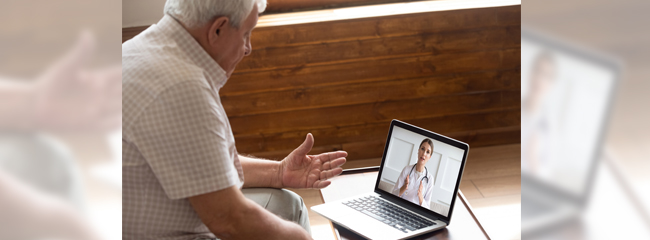Written by Rich Murphy, Product Director - iatricSystems

U.S. public health officials, hospitals, and insurance companies are urging people to try telemedicine to prevent having to leave their homes and to therefore curb the spread of COVID-19, and people are listening. Once skeptical, patients are jumping on board so they can be evaluated in a safer setting – their home. Healthcare organizations are also reassessing staffing and shifting a large portion of hospitals to teleworking.
Telemedicine isn’t a new concept – a survey conducted by HIMSS Media revealed that 90 percent of healthcare organizations started offering or piloting telehealth programs just last year. In the wake of COVID-19, the healthcare industry is working harder than ever to keep all of its people safe.
While telemedicine and telework offer numerous benefits – especially during social distancing – like all forms of technology, it can still be vulnerable to cyber threats. The Cybersecurity and Infrastructure Security Agency (CISA) is encouraging organizations to adopt heightened cybersecurity efforts to mitigate the chances of an attack.
According to CISA, more vulnerabilities are located in virtual private networks because since these networks operate on an ongoing basis, they’re less likely to be updated with the latest security patches. CISA also noted that there had been an increase in the number of phishing emails addressed to healthcare employees.
What Can You Do?
Experts recommend organizations should consistently update VPNs, network infrastructure devices, and other devices used to complete remote work. You should also make sure your workforce is aware of the uptick in phishing emails and remind your staff not to open suspicious emails or click links from unknown senders.
Above all, it’s important to stay current with industry regulations regarding remote access. HIPAA guidelines require that:
By following these recommendations, you’re not only protecting patient information, but you’re also creating a sense of trust and reassurance for your patients and staff that people need during this stressful time.
How Can We Help?
We realize you’re moving at a face pace right now. We understand that your IT projects are likely on hold, but there may be areas where you need to change your processes to accommodate the mandates of COVID-19.
If you need help to mobilizing your remote workforce quickly, in as quickly as one work week, we can get you up and running with our SecureRamp™ solution. Please feel free to contact us to learn more about securing remote access for your employees and protecting patient records.
The iatricSystems™ team is here for you – whenever you need us.